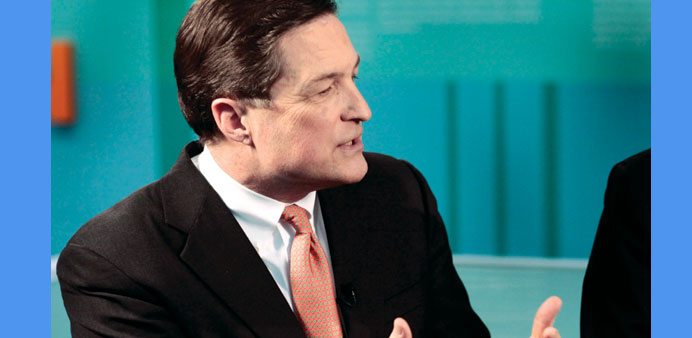Bloomberg/Richmond, Virginia
Federal Reserve Bank of Richmond President Jeffrey Lacker said the main interest rate should be raised in June amid a stronger job market, consumer-spending growth and inflation heading back toward the Fed’s target.
“A strong case can be made that the federal funds rate should be higher than it is now,” Lacker, who votes on policy this year, said yesterday in the text of remarks at the district bank in Virginia. “Unless incoming economic reports diverge substantially from projections, the case for raising rates will remain strong at the June meeting.”
Lacker said that if the policy-setting Federal Open Market Committee opted not to raise rates at its June 16-17 meeting, he would decide at that time whether to dissent or to vote with the majority.
“I haven’t decided yet. I’ll wait and see what my colleagues have to say,” he told reporters after the speech. Lacker, who dissented at all eight FOMC meetings in 2012 in favor of tighter monetary policy, has voted with the majority at both meetings held so far this year.
He said consumer spending has gathered momentum and business investment should contribute to growth this year, putting economic growth in the 2% to 2.5% range. In his last economic outlook speech in January, he said growth in 2015 may be around 2.25%, while “there are reasons to believe” it could be as high as 3%.
Policy makers opened the door March 18 to an interest-rate increase as soon as June, while also indicating in their forecasts it will go slow once it gets started. Fed Chair Janet Yellen said last week interest rates will probably be raised in 2015 and made the case for a cautious approach to subsequent increases that will keep borrowing costs low for years to come.
Lacker said the pace of policy tightening after rate liftoff should be determined by incoming data, cautioning that “we could need to tighten more rapidly than people expect.”
Officials this month also cut their median estimate for the main rate at the end of 2015 to 0.625%, compared with 1.125% in December forecasts. Since 2008, the Fed has held rates near zero and more than quadrupled its balance sheet to about $4.5tn in three rounds of asset purchases.
Even after several rate increases, the Fed will still be supplying “quite a bit of stimulus” to the economy for a “considerable period,” Lacker said. He said inflation will rebound as the dollar peaks and energy prices start to rally.
One reason monetary policy may continue to support growth after rate liftoff is the downward pressure exerted on long-term borrowing costs by the Fed’s balance sheet.
Lacker said he “would favour ending reinvestments relatively soon” in an effort to begin bringing it down to a more normal size.
Fed Chair Janet Yellen said at a press conference after the FOMC meeting on March 18 that officials have not made up their minds on the best way to trim the balance sheet after liftoff.
“We’ve not made any decision at this point about how long it will be, once we begin to raise rates, before we reduce or cease reinvestment,” she said. “We will see how things go, and the committee will revisit that and make a decision at a later time.”
The Fed says it wants to be “reasonably confident” inflation is rising back to 2% before raising rates.
Lacker said inflation is “likely to begin moving back toward 2% this year” as the decline in energy prices proves transitory. The Fed’s preferred price gauge rose 0.3% in February from a year earlier and has been below the Fed’s 2% objective for almost three years.
Sluggishness in the housing market is unlikely to change quickly, and homebuilding probably won’t be a “major contributor” to economic growth this year, Lacker said.
Lacker, 59, spoke yesterday to a forum of regional business leaders.
He became president of the Richmond Fed in 2004 after five years as director of the regional bank’s research department.

Lacker: Call for a prompt tightening of monetary policy.
